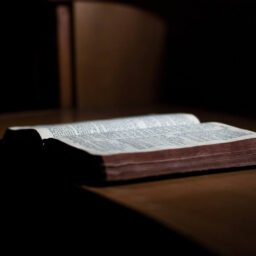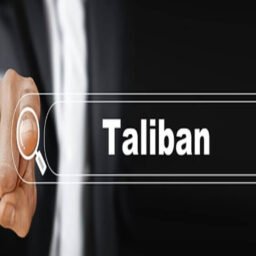OVERVIEW
The Janta Dal Regime led by Shri S.R. Bommai(hereinafter “Bommai”)stayed dismissed by the country’s President under Article 356 (1) of the Constitution on the recommendation of the Governor of the State of Karnataka. According to the Governor’s report, due to the dissensions and defections in the Janta Dal and hence as Bommai did not have a majority in the Assembly, having the State managed by an Executive consisting of a Council of Ministers who did not have a house majority was unacceptable. The Lok Sabha and Rajya Sabha both approved the proclamation.
In a writ case to the Karnataka High Court (hereinafter “HC”), Bommai as well as other Cabinet of Ministers delegates contested the legitimacy of the said proclamation on different grounds. The petition was a three-judge HC bench, which held, Amongst various factors, the Governor’s report’s contents could not be considered immaterial, and that the Governor’s assurance that no other party could form a government had to be recognized because his integrity was not questioned, and his pleasure was based on a thorough examination of all pertinent facts. Karnataka HC ruled that using a floor test was neither mandatory nor required and that delivering the report to the President was not a need. Aggrieved by the said judgment, Bommai filed an appeal in the Supreme Court (hereinafter “SC”) raising various issues. The SC held that the proclamation dated 21.04.1989 was unconstitutional.
ISSUES RAISED BEFORE SC
- When can the President of the country exercise powers granted by Art.356?
- Whether the authority is given by Art. 356 are absolute or restricted?
- Is it possible for two governments to coexist in the same sphere?
- Is clause (3) of Article 356 intended to be a limit on the President’s power?
- If the proclamation is adopted by both houses within two months of its pronouncement, does the dismissed government resurrect after the proclamation time expires?
- Is the proclamation made under Article 356 (1) of the Constitution exempt from judicial review?
- If the court overturns the proclamation, does it have the authority to reinstate the ousted government or to resuscitate and reactivate the Legislative Assembly (hereinafter “LA”)?
- Is the federation established by the Constitution favourable to the Centre?
- Is it true that states are superior within the realms that have been assigned to them?
CONTENTIONS OF PETITIONER
- The President’s power under Article 356 is not unrestricted or limitless. Its application is predicated on the presence of an objection reality: the State’s government cannot function in line with the Constitution’s stipulations. This is a prerequisite to exercising the power and issuing a proclamation under Article 356.
- The grounds and causes for attaining the satisfaction must be stated in the proclamation, which must be backed by documents or the crux of the occurrences.
- The grounds and arguments must be compelling and convincing, and they must be directly related to the execution of the power within Article 356.
- The power underlying Article 356 can only be used when the government abuses its power in ways that are contradictory to the constitution’s essential plan and purpose, or when it fails to carry out its basic constitutional obligations and tasks.
- The federal nature of the constitution implies that the power within Article 356 may only be exercised when the state’s government has completely failed.
- The use of Article 356 authority interferes with federalism and has significant political ramifications. As a result, the court should apply its judicial review and injunction powers, as well as limit the broad breadth of power granted by Article 356.
- When there is no constitutional collapse, the power under Article 356 must be seen as arbitrary.
- Each act of the state government cannot be considered a breach of the Constitution or disintegration of the Constitution.
- The onus of evidence for establishing the competence or constitutionality of a proclamation issued under Article 356 is invariably on the government.
- Article 356 indicates that when all other options have been tried, an ultimate step of proclamation within the same might be used cautiously.
CONTENTIONS OF THE RESPONDENTS
- The burden of evidence is on the writ petitioners to establish that the orders are illegal or ultra vires; the Union of India is not compelled to submit the documents.
- Administrative law concepts are ill-suited since the President’s use of authority via Article 356 is a constitutional use of power, akin to one by Article 123 or through the legislative process. It should only be put to the test if it has excessive powers or is unlawful.
- That the grounds for the President’s pleasure are included in the recommendation provided by the Council of Ministers. As a result, they are immune from court review, even if no order issued by the President is protected by 74(2)or else the Evidence Act, Sec.123.
- Because both Parliament houses have endorsed the Proclamation within clause (1), the Proclamation tends to take on the nature of law and may only be reversed on reasons that pertain to legislation, as envisioned by clause (3).
- Even though legislation is Parliament’s principal responsibility, not that each act of Parliament amounts to or results in a law. Parliament also has several additional responsibilities, one of which is the approval of the Proclamation under section (3). Such assent cannot be deemed “legislation” by any extent of the imagination.
JUDGMENT
The Karnataka HC’s decision was overruled, and the ousted Karnataka, as well as Meghalaya state governments, were reinstated, with the proclamations made in the abovementioned states declared invalid. The court decided that the President’s exercise of his power within Article 356 (1) to issue a proclamation is subject to judicial review, at least to the extent of evaluating whether the circumstances precedent to the proclamation’s issuing have been satisfied or not. This evaluation would invariably involve a look at whether there was enough information to persuade the President that a situation had arisen in which the state’s government could no longer operate following the Constitution. According to the court, the President cannot dissolve the State’s LA by using his power under Art. 356 (1)only if the Proclamation is acknowledged by both Houses of Parliament within clause (3) of the article. He could only be able to suspend the LA if he has the right to do so as per clause (1), subclause (c). As a result, one may claim that Article 356 limits the President’s power.
Whether or not the President’s Proclamation is authorized by Parliament, the court has the authority to overturn it. This implies that the courts would be capable of restoring the status quo and, as a result, the Council of Ministers and the LA will be restored to their original positions as of the day of the Proclamation’s issuance. To put it another way, the declaration is up for review by the courts. If requested, the Union of India must provide the basis upon which the decision was taken. Secularism is one of the essential principles of the Constitution, according to the court. Anystate legislature that advocates non-secular programs or adopts non-secular activities violates the Constitution and risks Article 356 proceedings.
CONCLUSION
The ruling in S. R. Bommai upholds India’s federal structure by providing states sufficient autonomy and prohibits the centralized government from meddling with the government’s operations. The decision defines the extent of judicial review, sustaining the system of checks and balances. The verdict was designed to prohibit political exploitation of Article 356, but later events have shown how these provisions are used for political gain by governing parties. These occurrences have continued to occur even after the historic decision, but the federal system has been actively preserved by the judiciary. A change to the Article is required to reduce the rate at which President’s Authority is enforced in states. The hostile Central government’s arbitrary dismissal of state legislatures came to an end because of this litigation. Just the floor of the Assembly, not the Governor’s subjective opinion, should be considered to test the confidence of the government at the time, according to the court.
Author(s) Name: Shreya Kasale (Asmita College of Law, Mumbai University)
















